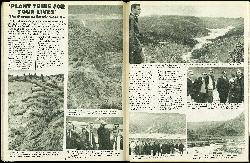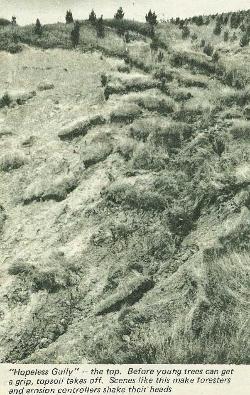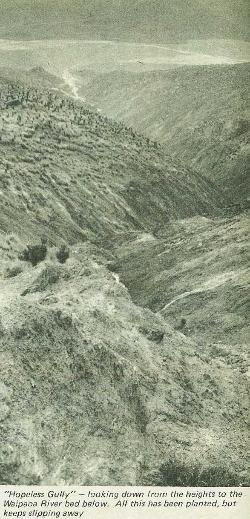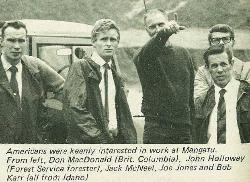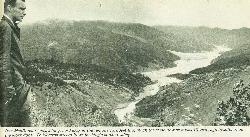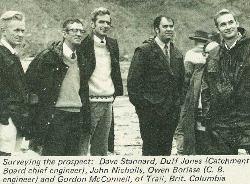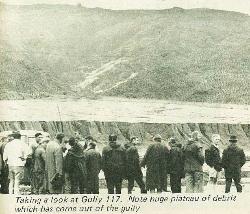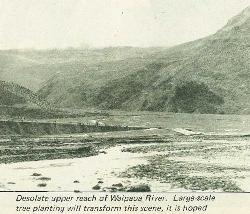54
'Plant Trees for your Lives'
The Mangatu Battle Goes On
"All ye who enter the portals of the Mackenzie Country, plant trees for your lives!" says the plaque on Burke's Pass in South Canterbury. Or words to that effect.
The same might well apply to the Mangatu area northwest of Gisborne, where trees appear to be the only answer to one of New Zealand's worst erosion problems.
There, men of the Forest Service are planting vast areas of unstable hillside with hundreds of thousands of pinus radiata trees. It is hoped that as these grow, their roots will hold the soil together, the shelter they give will break the force of the rain, and the carpet of pine needles on the ground will act as a sponge to slow down run-off.
But in really bad places the odds are heavily against success. When the rains come, while the trees are still small, great sheets of topsoil slide away downhill, precious pines and all, leaving the bare and eroding hillsides open to the weather.
On a wet and misty day last month, "Photo News" went along with a party of Rotary group study exchange fellows from British Columbia and nearby U. S. states to have a look at the problem firsthand. Most of the visitors were conservation-oriented, and what they saw was one of the highlights of their New Zealand visit.
"Hopeless Gully" — the top. Before young trees can get a grip, topsoil takes off. Scenes like this make foresters and erosion controllers shake their' heads
"Hopeless Gully" — looking down from the heights to the Waipaoa River bed below. All this has been planted, but keeps slipping away
Americans were keenly interested in work at Mangatu. From left, Don MacDonald (Brit. Columbia), John Holloway (Forest Service forester). Jack McNeel, Joe Jones and Bob Karr (all frorh Idaho)
55
So far, 14,000 acres have been planted. Some of the trees are now more than 10 years old, but the great majority are still very young. A little more than half are pinus radiata, which have been found to be best suited to the locality and the purpose. Some eucalyptus are planted every year.
About 50 men now man the project. Most travel daily from Te Karaka, which is deriving considerable commercial benefit as a result. The officer in charge of Mangatu State Forest is Mr Maika Mason.
Mangatu is only a part of the massive erosion control and forestry programme scheduled for East Coast back country where erosion is a real problem. Progress is being made now with afforestation in the more northern sector inland from Ruatoria.
Ultimately, the enormous forests planned will give the district an area of timber equivalent to that on which the Kawerau Pulp and Paper Mill is based.
Meanwhile the real local concern is to halt the flood of debris in the Waipaoa River and its tributaries. It is still a major threat to the security and prosperity of Gisborne and the Poverty Bay flats.
Don MacDonald takes a long, hard look at the famous Tarndale slip, much the same now as it was 10 years ago in spite of all the work done. Te Wereroa stream flows in shingle-choked valley
Surveying the prospect: Dave Stannard, Duff Jones (Catchment Board chief engineer), John Nicholls, Owen Borlase (C. B. engineer) and Gordon McConnell, of Trail, Brit. Columbia
Taking a look at Gully 117. Note huge plateau of debris which has come out of the gully
Desolate upper reach of Waipaoa River. Large-scale tree planting will transform this scene, it is hoped


